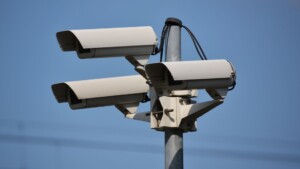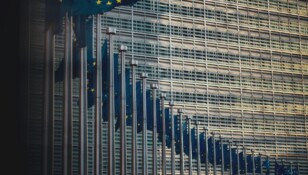Tax offices. They are probably the most hated institutions in our society. They regularly drive us mad with their almost insatiable hunger for our hard-earned money. Who doesn’t know the feeling of despair and frustration when you have to fill out another tax return and struggle through incomprehensible laws and forms? Even if this introduction seems to be a little exaggerated, no one wants to fall into the clutches of the examining tax authorities.
But is this a typical German phenomenon? Not at all! What the British tax authority “HMRC” is doing in the newly crowned Charles III kingdom to minimise the tax gap makes local tax offices look rather old. The technology used is called “Connect System”, which critical voices on the island also disdain as spying software. Connect, meaning everything is connected.

©Pixabay
What is “Connect”?
Connect is nothing more than a digital spider’s web that brings together data from different sources to uncover discrepancies and anomalies. Whether it is a secretive house, a supercar or an undeclared eBay trade – Connect can connect all this data and match it with tax data. An example of the different sources that the Connect system brings together in the UK might look like this: The system collects data from various sources, such as banks, insurance companies, property registers and public records, to create a comprehensive profile of taxpayers.

©Pixabay
Suppose a taxpayer has a property portfolio that he rents out. His bank details show that he receives monthly rental income. However, suppose the taxpayer does not declare rental income in his tax return. The Connect system can detect this and trigger an audit in that case. In this way, the system can detect possible tax evasion or avoidance by linking different data sources and detecting patterns of behaviour that indicate this.
Connect cost almost £100 million to develop, but it has paid off for HMRC. The system has already raised more than £3 billion in revenue and is helping to close the tax gap. It allows investigators to quickly and efficiently point out things worth investigating. Connect can analyse vast amounts of data and connect different data sets, enabling HMRC to tackle fraud and tax evasion more effectively and increase tax revenues.
Critics disdain Connect as spy software
But not everyone is enthusiastic about Connect. There are concerns about data protection and taxpayers’ privacy. Some also fear that the system can collect detailed information about their financial situation without their knowledge or consent – Big Brother sends his regards! In theory, this sounds sober and unthreatening initially, but what if you are affected? How does one deal with the fact that one’s financial circumstances, due to networked systems, paint a picture that involuntarily gives others an insight into one’s most private events? The critics’ concerns are, therefore, more than understandable.
There are concerns about the privacy implications of the Connect system, but it is an important tool for enforcing tax compliance and deterring fraud.” – Richard Murphy, Professor of Political Economy at City, University of London.
Another danger: cyber attacks
Besides the feared data breaches, one of the central concerns is the fear of cyber attacks. After all, anyone who has ever been the victim of identity fraud knows the dimensions of such an offence. Therefore, the concern of cyber-attacks cannot be dismissed – quickly ruined is the one whose stolen and misused personal and financial data fall into the wrong hands!
There are also concerns about the accessibility of the Connect system. Not all citizens have the same access to the technology required to use the platform. While the platform is designed to be user-friendly, accessibility is a challenge. Certain groups of citizens could be excluded from critical public services.
But despite these concerns, the use of technology in accounting and taxation remains an important advance that benefits tax authorities and businesses. Of course, one can also argue and ask heretically: if you have nothing to hide, you have nothing to fear. True. But only conditionally. As mentioned above, the Connect system can also lead to false inferences. That is where the devil is in the detail: it is up to the taxpayer to provide clarification in case of an error on the part of HMRC. A time-consuming and stressful situation that can affect anyone!

© xurzon Getty Images
Despite the legitimate concerns, Connect is on course for success
It is interesting to note HMRC’s recently published report on measuring the tax gap on 9 July 2020. According to this report, the tax gap in 2018-19 was £31 billion or 4.7% of the total tax liability. The tax gap refers to the difference between the theoretical tax that should be paid to the government and the amount collected by HMRC. Calculating the hypothetical tax is complicated and carried out by HMRC using internal and external data and various analytical techniques. The report also shows that this gap has fallen from 7.5% in 2005-06 to 4.7%, which HMRC considers a better measure of compliance over time.
The report also shows that the most significant gaps by tax type are in income tax, national insurance contributions and capital gains tax (£12.1 billion) and VAT (£10 billion). Regarding the kind of ‘client group’, the report shows that the largest gap is in small businesses (£13.4 billion).
Conclusion:
Indeed, Connect is a powerful tool that gives the UK authorities a comprehensive overview. It also allows investigators to highlight suspicious activity and, most importantly, quickly! Increase tax revenues. But we should also be aware that using technology in accounting and taxation presents challenges, particularly concerning data protection and taxpayer privacy. We should ensure that these concerns are adequately addressed as we continue to implement innovative accounting and tax solutions.







